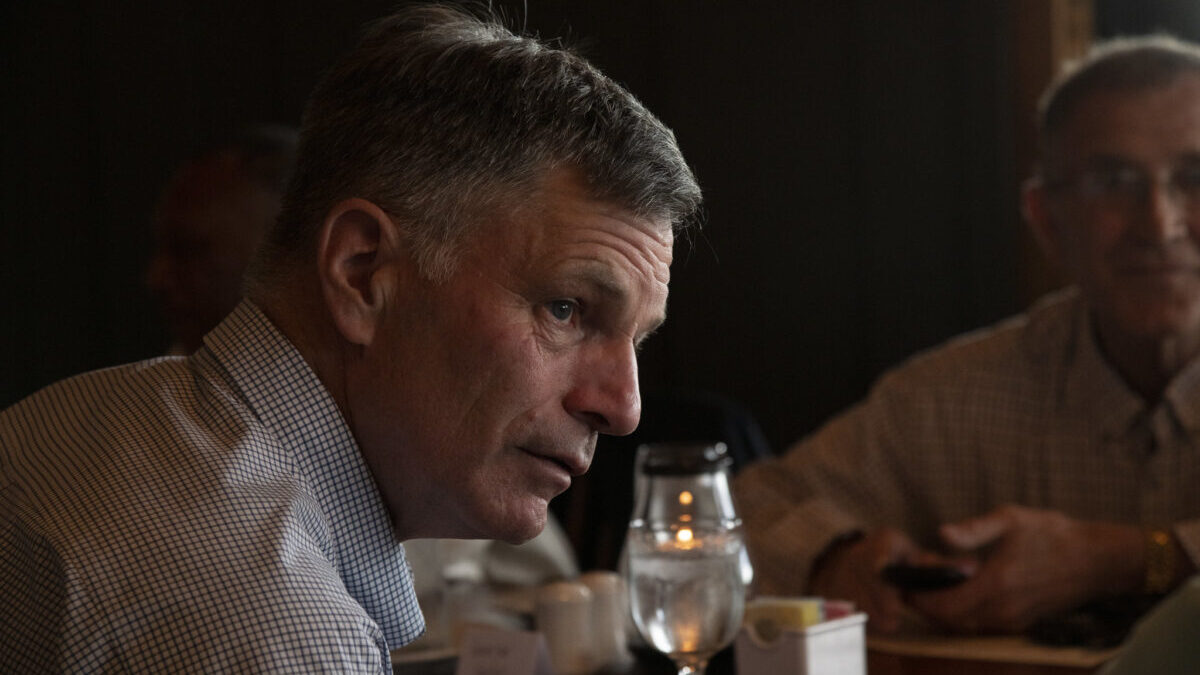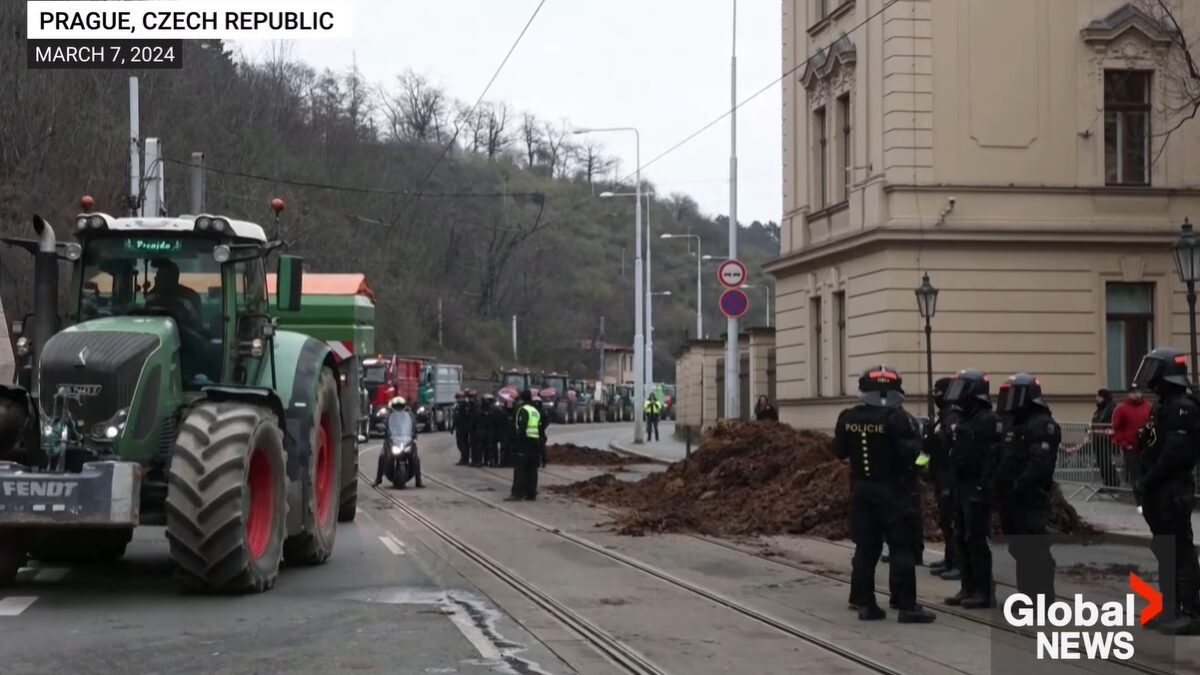Carbon sequestration has become Republicans’ most popular answer to climate change, with GOP governors across western states pumping massive stores of concentrated CO2 into underground chambers. Wyoming Gov. Mark Gordon, who chairs the Western Governors Association, currently leads the charge to his state’s detriment as a carbon-powerhouse and leading coal producer.
Last week, lawmakers in Wyoming heard from members of the CO2 Coalition who challenged Governor Gordon’s pledge to decarbonize the energy-intensive state with carbon capture programs. Dr. William Happer, the founder of the CO2 Coalition, compared such efforts to a “religion” before the Senate Agriculture, State and Public Lands and Water Resources Committee.
“If you look around, you need something bigger than yourself to make your life worthwhile: Happer said. “What’s bigger than saving the planet? The problem is the planet doesn’t need saving.”
The hearing featured testimony from Happer along with the coalition’s executive director, Dr. Gregory Wrightstone, and Frits Byron Soepyan, a chemical engineer with the non-profit. Other members of the CO2 Coalition’s board who did not testify at the hearing include Drs. Patrick Moore, a co-founder of Greenpeace, and John Clauser, a current Nobel laureate in physics honored at the White House last spring.
“Let me just address this 1.5-degree narrative,” Wrightstone said.
It’s already warmed 1.2 degrees. So, of that 1.5, it’s warmed 1.2. So, what they’re telling you is beware of three-tenths of a degree centigrade of warming which equates to half a degree Fahrenheit. It’s just changed half a degree Fahrenheit in this room recently, you’ve never noticed it. It wouldn’t trigger the thermostats on or off. It changes more than half a degree Fahrenheit between 11 a.m. and noon on almost every single day, and if you’re that worried about half a degree Fahrenheit of warming, you can move 19 miles farther north and your average temperature will drop half a degree Fahrenheit. That’s what they’re warning us about.
Last week’s proceedings were held in response to Gordon’s decision to back out of a debate with the coalition he had agreed to in November.
“It is no secret that many legislators disagree with the governor and his stance and policies regarding CO2,” said Sen. Cheri Steinmetz, the chair of the committee. “However, this meeting is strictly about CO2 and related policy issues, and in no way intended to be personal in any way to the governor.”
‘Decarbonizing The West’
The forum was orchestrated to protest Gordon’s “decarbonizing the West” initiative that was declared a top priority while head of the Western Governors Association. In a speech at Harvard University last fall, Gordon, who presides over the nation’s leading coal producer, boasted, “We are the first state that has said we are going to be carbon negative.”
“You can’t really do that without direct air capture or somehow doing carbon capture and sequestration,” Gordon said, betting success on a new technology embraced by Republican governors across the country. The Wyoming governor doubled down on the initiative with an interview on “60 Minutes” pledging “aggressive” action, and other governors are following suit.
Last year, Alaska Republican Gov. Mike Dunleavy introduced a legislative package to “capitalize on carbon markets” with carbon capture programs, “particularly in Cook Inlet.”
In North and South Dakota, landowners have faced eminent domain lawsuits as a major carbon capture company constructs a more than 2,000-mile pipeline across the upper Midwest. Carbon capture projects have been championed by the states’ Republican governors, Doug Burgum and Kristi Noem.
“Today, we’re on our way toward achieving carbon neutrality as a state by 2030, thanks to our extraordinary capacity to safely store over 252 billion tons of CO2, or 50 years of the nation’s CO2 output,” Burgum said last year. “And in the process, we can help secure the future of our state’s two largest industries, energy and agriculture.”
[RELATED: Where Is Kristi Noem As Her Corporate Sponsors Take Over Constituents’ Land?]
Last summer, Wyoming struck a bipartisan partnership with Colorado to expedite development of carbon capture technology, and Idaho Gov. Brad Little joined Gordon at a “Decarbonizing the West” workshop in Boise in December.
“Natural sequestration is a critical component of decarbonization efforts,” Little said. “Healthy forests, soil, and rangelands can sequester enormous amounts of carbon. However, when those resources are poorly managed the opposite can be true … Decarbonization is also creating new opportunities for agricultural producers, for whom carbon sequestration can generate additional revenue while reducing emissions.”
Carbon sequestration, however, doesn’t come without risk. Residents in rural Mississippi have first-hand experience of what can happen when things go wrong.
Carbon Catastrophe
An explosion three years ago filled the air of Yazoo County in central Mississippi with a dense concentration of carbon dioxide that caused mass poisoning. More than 200 people were forced to flee, and at least 45 wound up in the hospital. Cars were stuck as inoperable because of the lack of oxygen in the air, disrupting emergency services.
“It looked like you were going through the zombie apocalypse,” a local emergency director told National Public Radio.
There are, however, risk-free alternatives to sequestering carbon to the construction of intrusive pipelines. In biological carbon sequestration, carbon dioxide is absorbed into soils, oceans, grasslands, and forests. Natural soil storage can be amplified with proper agricultural practices and responsible land management.
Hundreds of scientists, meanwhile, dispute the popular narrative that carbon dioxide in the atmosphere presents an urgent existential threat. Last summer, Clauser, one of the board members for the CO2 Coalition, became the second Nobel laureate to sign a 2019 declaration that the climate “emergency” is a myth. The declaration included more than 1,600 signatures and was organized by the Climate Intelligence Foundation (CLINTEL).
“Climate science should be less political, while climate policies should be more scientific,” the statement reads. “Scientists should openly address uncertainties and exaggerations in their predictions of global warming, while politicians should dispassionately count the real costs as well as the imagined benefits of their policy measures.”
Atmospheric carbon has also been shown to proliferate forest growth, known as the “greening” effect. Vegetation happens to grow faster in regions with relatively high concentrations of carbon dioxide. Michael Shellenberger explained in his 2020 book Apocalypse Never, “From 1981 to 2016, four times more carbon was captured by plants due to carbon-boosted growth than from biomass covering a larger surface of Earth.”









